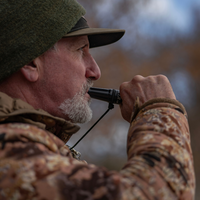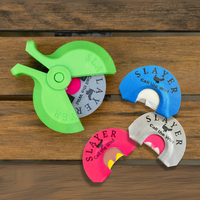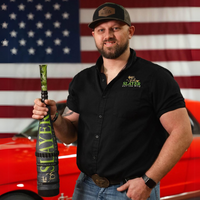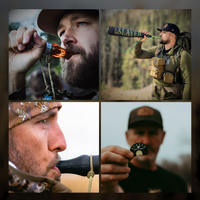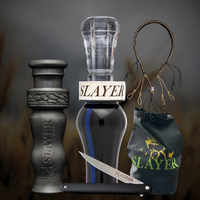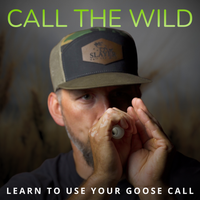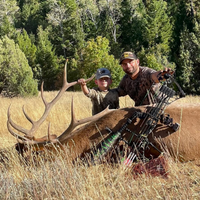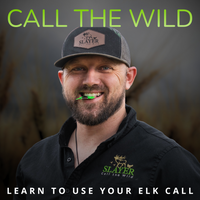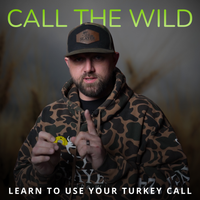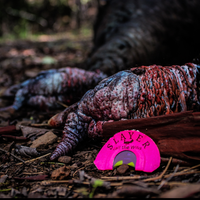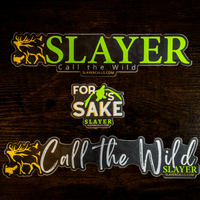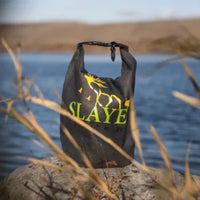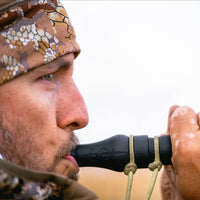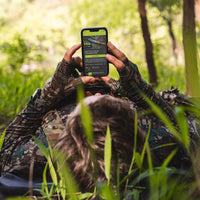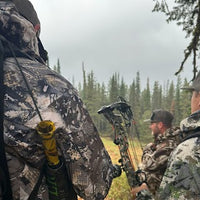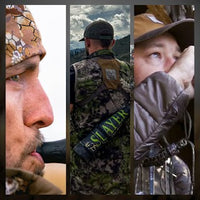Snow geese pull off some of the most electrifying moments in waterfowling—the massive “spins” of birds circling in, the thunder of wings, the drop into the decoys. But they’re also notoriously wary. As one recent article by the Atlantic Flyway Council put it: “Snow goose hunting can be the most frustrating facet of waterfowl hunting, but also the most rewarding. Getting geese to commit means nailing decoy spread, concealment, field logistics—and perhaps as importantly, getting the calling right.”
Landing them means more than just decent gear: you need the right decoy spread, tight concealment, smart logistics—and just as critically, you need the calling to match the moment.

Why calling matters
Calling isn’t just noise. It performs multiple roles:
-
It signals to arriving birds that there are geese on the ground and that the area is safe and active.
-
It helps steer the flight — the origin of the sound becomes part of the draw toward the decoys.
-
And for those high-pressure, wary flocks, it can make the difference between a pass and a drop.
In an article on goose calling, Ducks Unlimited stressed the importance of mimicking natural behavior. Their advice: begin with the voice of one goose, then layer in spontaneous, uneven notes so you avoid any mechanical rhythm. While that advice was directed broadly at geese, it’s doubly important for light geese (snow and Ross’s)—birds whose calls are erratic, overlapping, and best imitated with an unstructured cadence to keep them convinced you’re “real.”
What hunters are saying about e-callers for snow geese
We scoured forums, blogs and hunting communities to gather the real voice of hunters chasing snows. Here’s what they consistently highlight:
One major theme: volume and cone of sound. Electronic callers have the grunt and reach to simulate a massive flock on the ground—something a few hand-calls simply can’t replicate. One hunt-report put it bluntly: you can’t sound like a thousand geese with four guys calling, but with electronics you can.
Still, seasoned hunters caution that e-callers aren’t a silver bullet. Even the best audio won’t save a flawed spread or a poorly-concealed hide. Success is still a mix of sound, layout, blind placement, and shot timing.
Another consistent point: Even in a field loaded with e-callers, hunters still carry a mouth call.
Why? Because electronics can fail, conditions shift, and sometimes a handheld call gives you an edge when birds are close and need that last-second coaxing. Hunters on the DuckHuntingChat forum for example, noted that while they run multi-speaker e-caller systems, they switch to hand calls to add variation, inject realism, or recover when tech lets them down.
Introducing the Slayer Snowstorm: power and realism in one call
The Slayer Snowstorm was born from the kind of field conditions every snow-goose hunter knows too well—cold winds, massive flocks, and high-pressure birds that have heard it all. “We built the Snowstorm to sound alive,” says Slayer Calls CEO Bill Ayer. “It’s tuned to hit that sharp bark and machine-gun chatter that real snows make on the ground, but with the control to back off when birds are on the edge of committing.”
The call’s easy-blowing, low-resistance design means hunters can stay on it all day without burning out, and its volume cuts through 30-mph gusts without losing tone quality. “E-callers are great for reach,” Ayer adds, “but when birds get close, nothing replaces the nuance of a handheld call. That’s why we designed the Snowstorm to pair perfectly with an e-caller—or to stand alone when you need that last-second realism to finish the flock.”
When to use electronic calls, mouth calls — or both
Every snow-goose hunter knows that calling is about timing and adaptation. There’s a time for volume, and there’s a time for finesse. Electronic callers shine when you’re working wide-open country and trying to pull in big migrators from a long way off. That “wall of sound” an e-caller throws—especially when you’re running multiple speakers across the spread—creates the illusion of a thousand birds feeding on the ground. It’s unbeatable for reach and realism at a distance, and it saves your crew from wearing out their lungs during an all-day grind.
But once those geese start to work the spread—circling low, checking things out, or getting cagey—the game changes. That’s when a mouth call takes over. You can tone it down, throw in those natural clucks and barks, and sound more like the birds that are already on the ground. A hand call gives you nuance and control, something an electronic track can’t mimic. It’s also a go-to when hunting pressured fields where birds have been blasted by the same recordings for weeks. Sometimes, that shift to a human-made call is all it takes to convince them it’s safe to land.
The truth is, the smartest hunters use both. Start with the e-caller to grab attention, then finish with your hand call to close the deal. Slayer’s Snowstorm was designed with exactly that combo in mind—loud enough to compete with your speakers, yet subtle enough to finesse those last few yards. And when batteries die or gear glitches (because it always does), your handheld is your backup plan. “E-callers do the heavy lifting,” says Slayer CEO Bill Ayer, “but a mouth call gives you the precision to finish. Together, they make you unstoppable.”
Best timing by scenario
Here are workflows based on common field situations:
|
Situation |
Calling strategy |
|
Big migrating flock seen far out (400-1000 yds) |
Start your e-caller on a “hail/arrival” track: high volume, sounds of a big flock feeding and calling. As they drop into the vicinity (≈200-300 yds), keep the e-caller going, but bring in your handheld for finishing: sharp barks, chatter, adjust tone for close birds. |
|
Birds already working your decoys, circling low and wary |
Dial back the volume. Possibly shut off or reduce e-caller. Then use your mouth call: subtle bark/cluck, imitate committed birds already on the ground, keep it believable. |
|
Windy day or high-pressure field (birds have been hunted hard) |
Use an e-caller for reach and to break through noise/wind. Set the spread realistically. Once birds get committed, bring in your handheld call to “seal the deal.” |
|
Smaller group or singles creeping in late |
A loud e-caller may be overkill. Consider handheld call only: subtle sounds, lower volume, realistic feed chatter to sell calm and safety. |
|
Multiple e-caller speakers across spread |
Start heavy with e-callers, but have someone with a handheld ready to vary cadence, provide “human” response as birds bank and approach. |
|
Final approach / landing phase |
Handheld call takes precedence. When birds are banked and committed, you don’t want blasting speakers; you want realistic finishing cues and confidence. |
Why the Slayer Snowstorm stands out
When it comes to snow geese, sound is everything—and the Slayer Snowstorm was built to own that sound. This call brings serious volume and lifelike tone, tuned to capture the sharp barks, chatter and machine-gun cadence of a real flock. It cuts through 30-mph winds without losing that authentic edge, giving hunters the realism they need to turn distant birds into committed finishers.
What makes the Snowstorm different isn’t just power—it’s control. Its low-resistance design means you can stay on the call all day without wearing out your lungs, keeping your sound crisp and consistent from the first setup to the last volley. And because it’s fully E-Caller Compatible, the Snowstorm fits seamlessly into your dual-calling strategy. Pair it with your speakers to add a layer of live realism—or run it solo when you want a more intimate, hand-tuned sound that convinces pressured birds to drop.
“E-callers do the heavy lifting,” says Slayer CEO Bill Ayer. “But there’s always that moment when the human touch makes the difference. That’s where the Snowstorm shines—it lets you finish birds that electronics can’t.” Whether you’re hunting a big migration field or a tight corner where e-callers aren’t allowed, this call gives you the versatility to adapt and stay lethal.
Final takeaways
There’s no debate—both electronic and mouth calls have their place. Each brings unique strengths depending on distance, wind, pressure and how the birds are working. The key is knowing when to lead with power and when to finish with precision.
Don’t think of it as choosing one over the other. Think of it as expanding your toolkit. The Snowstorm bridges that gap, giving hunters the flexibility to adjust in real time as flocks change altitude, direction or attitude.
At the end of the day, snow geese are unpredictable—what flares them today might bring them screaming in tomorrow. As Bill Ayer likes to say, “Hunting snows isn’t about perfect conditions—it’s about perfect timing.” With the right mix of e-caller volume and the realism of a Slayer Snowstorm in your hand, you’ll be ready when that next white wall of wings comes barreling in.
